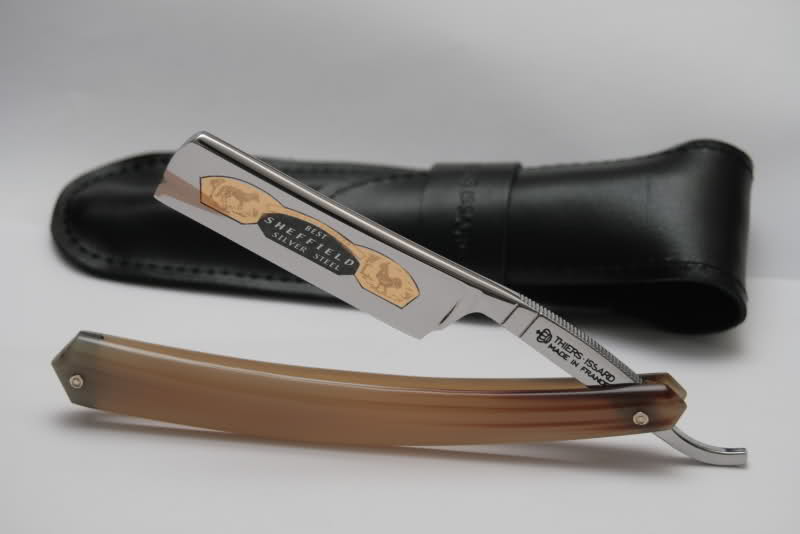|
Razor
A razor is a bladed tool primarily used in the removal of body hair through the act of shaving. Kinds of razors include straight razors, safety razors, disposable razors, and electric razors. While the razor has been in existence since before the Bronze Age (the oldest razor-like object has been dated to 18,000 BC), the most common types of razors currently used are the safety razor and the electric razor. History Razors have been identified from many Bronze Age cultures. These were made of bronze or obsidian and were generally oval-shaped, with a small Tang (tools), tang protruding from one of the short ends.Warwickshire County Council: New Prehistoric Archaeology Objects "Even furthe ... [...More Info...] [...Related Items...] OR: [Wikipedia] [Google] [Baidu] |
Straight Razors
A straight razor is a razor with a blade that can fold into its handle. They are also called open razors and cut-throat razors. The predecessors of the modern straight razors include bronze razors, with cutting edges and fixed handles, produced by craftsmen from Ancient Egypt during the New Kingdom (1569 — 1081 BC). Solid gold and copper razors were also found in Ancient Egyptian tombs dating back to the 4th millennium BC. The first steel-edged cutthroat razors were manufactured in Sheffield in 1680. By the late 1680s, early 1690s, razors with silver-covered handles along with other Sheffield-made products known as "Sheffield wares" were being exported to ports in the Gulf of Finland, approximately 1200 miles (1931km) from Sheffield. From there, these goods were probably sent to Finland and even Russia. By 1740, Benjamin Huntsman was making straight razors complete with decorated handles and hollow-ground blades made from cast steel, using a process he invented. Huntsman's pr ... [...More Info...] [...Related Items...] OR: [Wikipedia] [Google] [Baidu] |
Safety Razor
A safety razor is a shaving implement with a protective device positioned between the edge of the blade and the skin. The initial purpose of these protective devices was to reduce the level of skill needed for injury-free shaving, thereby reducing the reliance on professional barbers. Protective devices for razors have existed since at least the 1700s: a circa 1762 invention by French cutler Jean-Jacques Perret added a protective guard to a regular straight razor. The first known occurrence of the term "safety razor" is found in a patent from 1880 for a razor in the basic contemporary configuration with a handle in which a removable blade is placed (although this form predated the patent). Safety razors were popularized in the 1900s by King Camp Gillette's invention, the double-edge safety razor. While other safety razors of the time used blades that required stropping before use and after a time had to be honed by a cutler, Gillette's razor used a disposable blade with two ... [...More Info...] [...Related Items...] OR: [Wikipedia] [Google] [Baidu] |
Shaving
Shaving is the removal of hair, by using a razor or any other kind of bladed implement, to slice it down—to the level of the skin or otherwise. Shaving is most commonly practiced by men to remove their facial hair and by women to remove their leg and underarm hair. A man is called ''clean-shaven'' if he has had his beard entirely removed. Both men and women sometimes shave their chest hair, abdominal hair, leg hair, underarm hair, pubic hair, or any other body hair. Head shaving is much more common among men. It is often associated with religious practice, the armed forces and some competitive sports such as swimming, running, and extreme sports. Historically, head shaving has also been used to humiliate, punish, for purification or to show submission to an authority. In more recent history, head shaving has been used in fund-raising efforts, particularly for cancer research organizations and charitable organizations which serve cancer patients. The shaving of head hair i ... [...More Info...] [...Related Items...] OR: [Wikipedia] [Google] [Baidu] |
Electric Razors
An electric shaver (also known as the dry razor, electric razor, or simply shaver) is a razor with an electrically powered rotating or oscillating blade. The electric shaver usually does not require the use of shaving cream, soap, or water. The razor may be powered by a small DC motor, which is either powered by batteries or mains electricity. Many modern ones are powered using rechargeable batteries. Alternatively, an electro-mechanical oscillator driven by an AC-energized solenoid may be used. Some very early mechanical shavers had no electric motor and had to be powered by hand, for example by pulling a cord to drive a flywheel. Electric shavers fall into two main categories: foil or rotary-style. Users tend to prefer one or the other. Many modern shavers are cordless; they are charged up with a plug charger or they are placed within a cleaning and charging unit. History The first person to receive a patent for a razor powered by electricity was John Francis O'Rourke, a Ne ... [...More Info...] [...Related Items...] OR: [Wikipedia] [Google] [Baidu] |
Thiers Issard
Thiers Issard or Thiers Issard Sabatier () is a French cutlery manufacturer; they are one of a number of companies using the Sabatier name. It exports a wide range of knives and straight razors to approximately thirty countries.Classic shaving through the Internet Archive: The Thiers-Issard Story. (Blade manufacturing details) quote: ''...In 1884 Mr. Thiers undertook to establish his own forge and assume the rightful place of such a highly regarded craftsman - working for himself. In order to differentiate his products from those produced by other members of his family who were still active in the trade themselves, he named his factory Thiers-Issard, adding his wife's family name, Issard, to his own...'' and: ''As can be expected, the more grinding required, such as in the ... [...More Info...] [...Related Items...] OR: [Wikipedia] [Google] [Baidu] |
|





